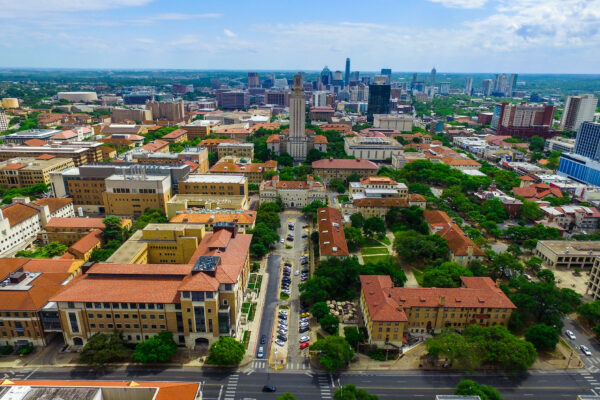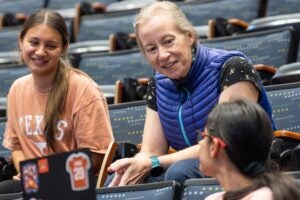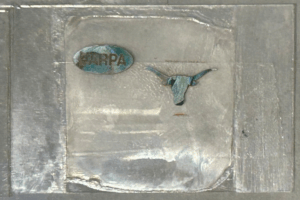AUSTIN, Texas — Discovery to Impact, The University of Texas at Austin’s newly named group leading the university’s research commercialization efforts, has been selected by the National Science Foundation (NSF) to lead a regional, four-state training program for researchers seeking to move their discoveries from the lab to the market. The five-year, $15 million NSF investment in the new Innovation Corps (I-Corps) Southwest Region Hub will strengthen an already robust innovation ecosystem and move more research discoveries to the market through startups.
Through this work, university researchers, graduate students, inventors and creators participating in the I-Corps Hub will grow the impact of their discoveries by advancing new products, services, solutions and cures that improve the world.
The new I-Corps Southwest Region Hub is one of five new Hubs across the country that NSF announced today. Along with UT Austin, the new Southwest Region Hub includes Louisiana State University, New Mexico State University, Oklahoma State University, Rice University, Texas A&M University, The University of Texas at El Paso and The University of Texas at San Antonio.
“Throughout the Southwest region — and in Austin, especially — we are experiencing remarkable growth in technology development, startup formation and access to early-stage to mid-stage capital,” said Christine Dixon Thiesing, associate vice president for Discovery to Impact at UT Austin and principal investigator on the Southwest Region I-Corps Hub. “The Southwest Hub will lead to measurable and enduring economic and societal impact in and across our communities. We are thrilled to lead this effort and work with the NSF and our Hub collaborators to drive more research breakthroughs into the world.”
The primary mission of the new Southwest Region Hub is to develop a systematic and comprehensive regional network of programming that accelerates the translation of federally funded research into innovations that support long-term success of academic startups, deep tech workforce development and economic growth.
With a diverse community of faculty members, graduate students, postdoctoral researchers and other innovators, the new Hub will implement standardized training programs, as well as the first curriculum delivered exclusively in Spanish, with a goal of reducing the time and risk associated with translating promising ideas and technologies from the lab to the market. It aims to provide assistance in a wide variety of efforts, from the creation and implementation of new tools, resources and training activities, to the analysis and evaluation of startup outcomes from participants.
“I am delighted the I-Corps Hubs that we are awarding today will expand the footprint of the National Innovation Network, harnessing the innovation potential that exists all across the country by establishing clear pathways for researchers to engage with NSF’s Lab-to-Market Platform,” said Erwin Gianchandani, NSF assistant director for technology, innovation and partnerships. “Each regional I-Corps Hub provides training essential in entrepreneurship and customer discovery, leading to new products, startups and jobs. In this way, the I-Corps program will open up new economic opportunities throughout the United States.”
The NSF I-Corps program was created in 2011 to support the commercialization of deep technologies, which grow from discoveries in fundamental science and engineering. Since its inception, approximately 2,800 NSF I-Corps research teams have participated in the program.
In 2014, UT Austin was selected to lead a regional NSF I-Corps Node, which at the time administered the I-Corps program’s curriculum and activities. The regional Node assisted UT researchers in the assessment and development of many innovative technologies, such as an in-vivo laparoscopic camera cleaner that can be used by doctors during surgery. Clearcam, the startup that launched in 2018 as a result of that research, has since developed two products and raised $4.8 million in funding.
The new Hub model covers a larger geographical and institutional area and represents an expansion and restructuring of the I-Corps program to help a greater number of researchers at more academic institutions.
Read more about the NSF I-Corps program here: https://beta.nsf.gov/funding/initiatives/i-corps.




